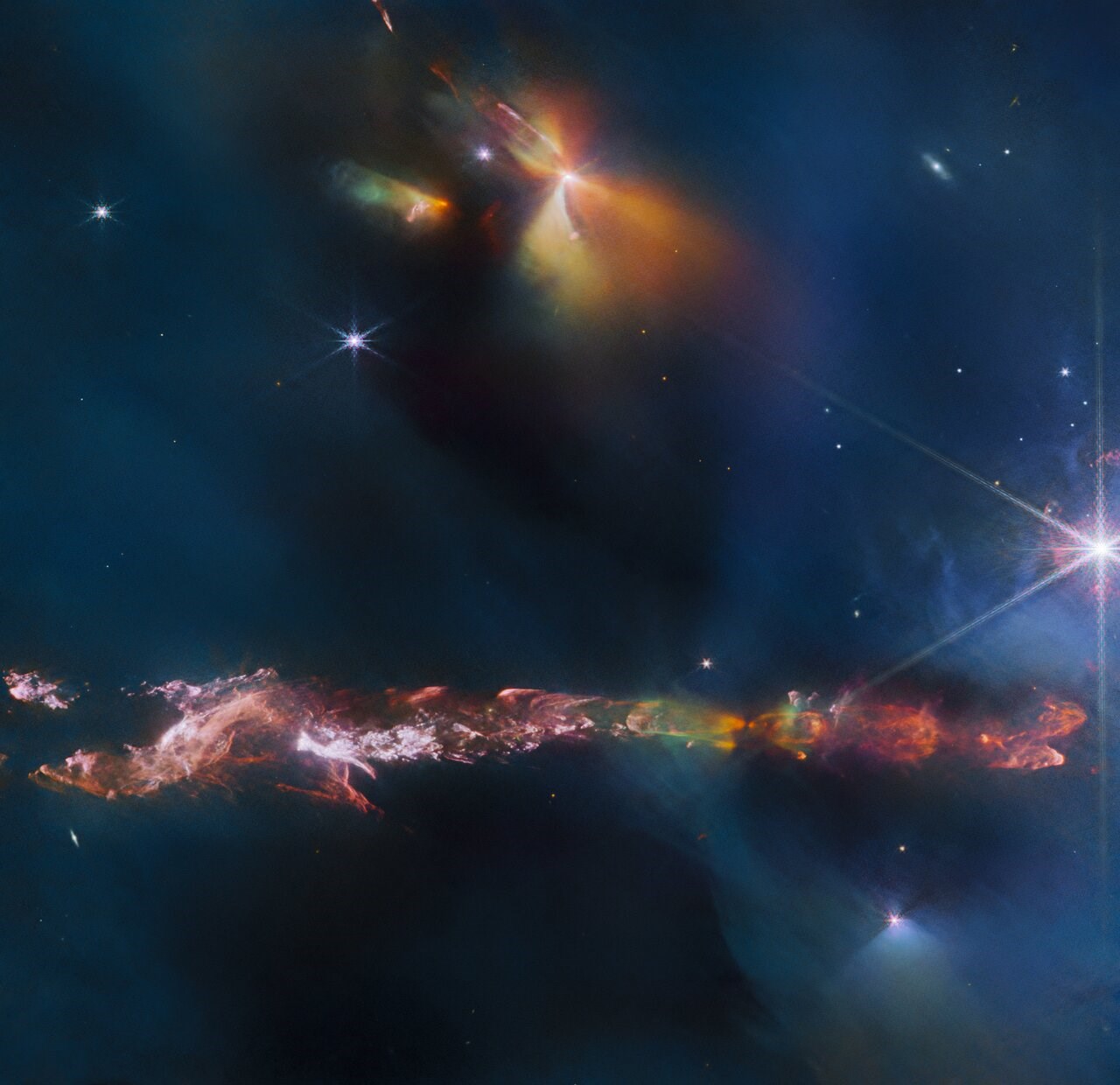 Using the James Webb Space Telescope (JWST), astronomers observed a cloud of bright material surrounding a newborn star, enveloping it in a cradle of gas and dust. The object in this striking image taken with the telescope’s Near Infrared Camera (NIRCam) instrument is named HH 797.
Using the James Webb Space Telescope (JWST), astronomers observed a cloud of bright material surrounding a newborn star, enveloping it in a cradle of gas and dust. The object in this striking image taken with the telescope’s Near Infrared Camera (NIRCam) instrument is named HH 797.Newborn star 1,000 light-years away
Located about 1,000 light-years away, the stellar “cocoon” is essentially an object called Herbig-Haro objects. Herbig-Haro objects are known as bright, elongated needle-like objects that appear during star formation and are often found around young stars. These objects form during intense outflows and outflows from gas and dust clouds around young stars. Just like the HH 797 image below.
 Infrared instruments such as NIRCam are ideal for studying young stars and searching for Herbig-Haro objects, since these cosmic objects are often covered by the remnants of the gas and dust that originally formed them. Therefore, the light emitted from these objects is very low and they are difficult to see with traditional observatories. On the other hand, this dusty structure does not pose a problem for infrared light.
Infrared instruments such as NIRCam are ideal for studying young stars and searching for Herbig-Haro objects, since these cosmic objects are often covered by the remnants of the gas and dust that originally formed them. Therefore, the light emitted from these objects is very low and they are difficult to see with traditional observatories. On the other hand, this dusty structure does not pose a problem for infrared light.There are actually two stars inside
Using ground-based observations, researchers previously found that for the cold molecular gas associated with HH 797, most of the redshifted gas (moving away from us) is to the south (lower right), while the blueshifted gas (moving towards us) is to the north (lower left). Astronomers also found that the gas on the eastern edge of HH 797 is more redshifted than the gas on the western edge. This change was previously attributed to the rotation of the outgassing in HH 797.
But in this high-resolution Webb image, what was thought to be a single output actually appears to consist of two outputs in parallel. The duality of the outflows indicates that there are not one but two stars in this dark bubble.